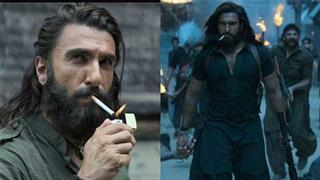An American journalist thinks Danny Boyle's award-winning film "Slumdog Millionaire" set in Mumbai "has taken on a new and wholly unexpected resonance" since the terror attacks in India's financial capital.
"Sometimes, when movies coincide with current events, it's not the message that proves eerily prescient. It's the medium - especially how it looks and feels, " says Ann Hornaday, a Washington Post Staff
Writer.
"Slumdog Millionaire" has become an audience favourite largely because it tells a classic Dickensian story, she writes. "But over the past 72 hours, 'Slumdog Millionaire' has taken on a new and wholly unexpected
resonance."
The movie is set in Mumbai, the Indian subcontinent's "maximum city, " where dire poverty and immense wealth slam up against each with increasing force, born of Mumbai's role in the globalised economy.
Much of the film was made on location, including the Chhatrapati Shivaji Terminus, the train station where dozens of people were killed or injured Wednesday as part of several coordinated attacks throughout the city,
Hornaday notes.
Directed by Danny Boyle in a frenetic, hand-held style that plunges viewers into the pulsing, contradictory life of the city, taking them on a headlong tour of the city's sprawling slums, nascent condo developments,
crowde streets and touristy outskirts, she says.
"'Slumdog Millionaire's' hyperkinetic, nonlinear approach anticipates how we have gotten news out of Mumbai over the past few days, as information appeared in an unsettling montage of carnage, explosions, grief and
confusion, " Hornaday writes.
"Shortly after the attacks began, around 9 p.m., in seven locations throughout the city, the first images began to appear. We saw the Chhatrapati station, its floors bloodied, abandoned luggage strewn in a frenzied
tableau.
At the elegant Taj Mahal Palace & Tower/hotel, flames burst from a window. Across the city, at the Oberoi hotel, another window framed the silhouette of a lone hostage, his shadow backlit by a blue TV-screen
glow.
"The lively, jammed streets of 'Slumdog Millionaire' were now emptied, the city's newly minted rooftops manned by commandos. This time the shaky, jangled images weren't the artistic choices of a style-conscious
director, but the only way to tell a life-and-death story that was unfolding, inexplicably and chaotically, in real time, " Hornaday writes
"It's not the content of the film but its form that is so uncannily anticipatory, with the film's distinctively jumbled visual style-in large part inspired by the quick, smash-cut editing of contemporary media - providing an
artful counterpoint to the chaotic real-time news images viewers are likely to see on their TV and computer screens, " she writes.
US critic finds `Slumdog`s` resonance in Mumbai terror attack
Monday, December 01, 2008 17:12 IST















